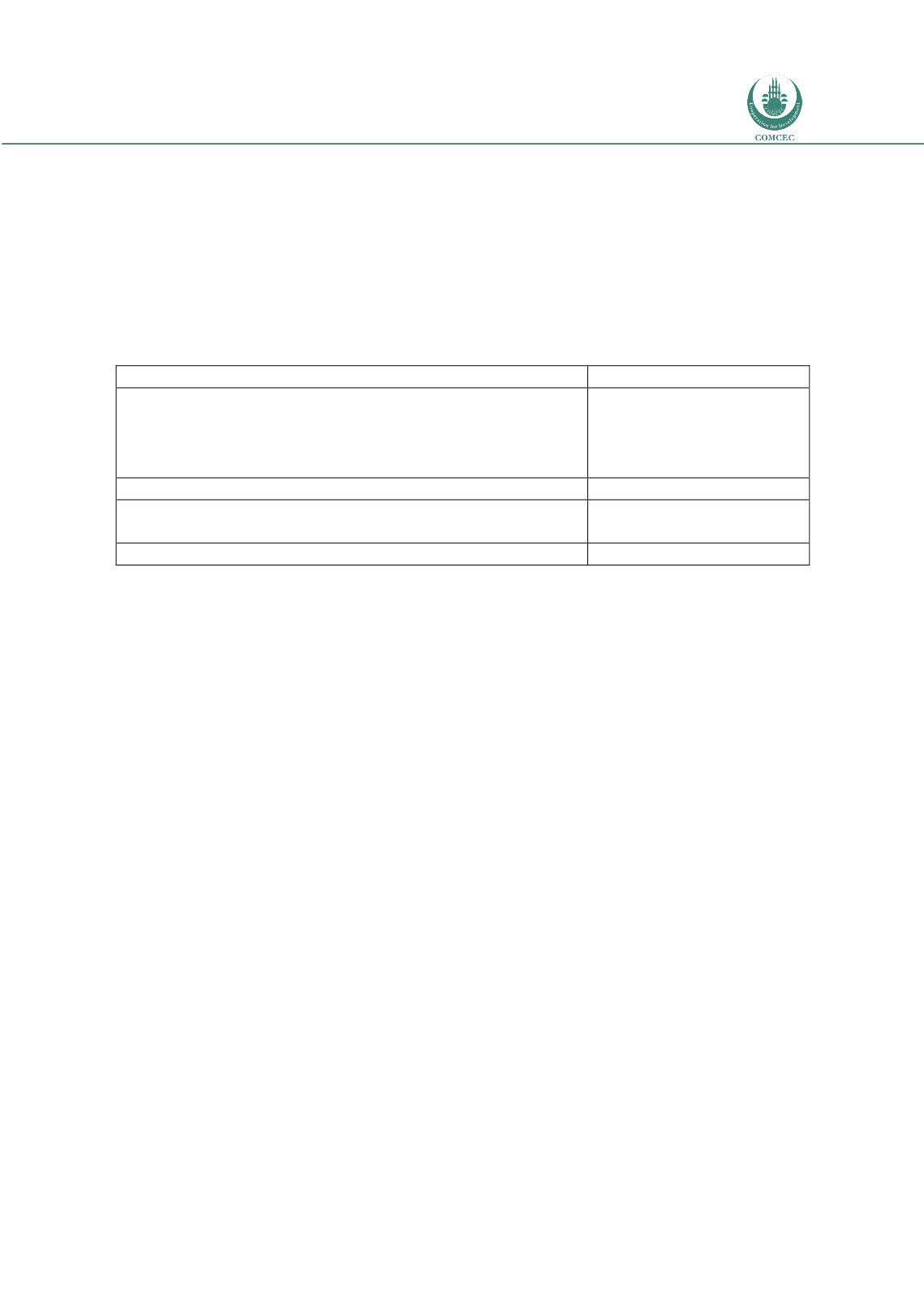

Risk Management in
Islamic Financial Instruments
51
buffer, and the leverage ratio, into IIFS. Since Islamic instruments are asset-based, profit-
sharing, agency or Sukuk, they are exposed to credit risk and/or market risk. Table 2 shows
the different types of Islamic instruments. Market risk arises from the cost of the asset to the
IIFS while the credit risk is based on the selling or leasing the asset to a second party. For
profit-sharing instruments such as Musharakah and Mudarabah, the risk is takes the form of
credit risk. The only exception is when the investments are in assets for trading purposes,
which become exposed to market risk. (IFSB 71-72).
Table 3.2: Types of Islamic Financial Instruments
Type
Islamic Instrument
Asset based on sale or purchase of an asset
Murabahah
Salam
Istisna
Sukuk
Asset-based on selling benefits of an asset
Ijarah
Profit-sharing
Musharakah
Mudarabah
Agency
Wakalah
Source: IFSB-IFSI Stability Report, 2013
The
ED-15
focused on five specific areas on improving capital adequacy standards. The draft
delineated the need to create a capital adequacy framework that would buffer exposure from
risk and address the capital adequacy requirements of risk exposures. A third objective was on
maintaining high-quality regulatory capital components that agree with Shariah principles.
Another standard revision was in regards to enhancing the capacities of capital adequacy
treatment of Sukuk issuances and securitization processes. Finally, the draft recommended
IIFS adopt international best practices on capital adequacy. Implementation of
ED-15
was
expected to begin on January 1, 2014 (IFSB 72).
Other efforts by the IFSB to further develop the infrastructure of the IFSI include improving
the supervisory review process through the revision of the IFSB-5, issuing a new Guidance
Note on integrating the Basel III liquidity standards into the IIFS, and creating a new Working
Group for the
IFSB Core Principles for Effective Regulation and Supervision of Institutions in the
IFSI.
The last initiative intends to create benchmarks to determine the quality of supervisory
systems in various jurisdictions and establish a baseline for Islamic finance supervisory
practices (IFSB 72-73).
3.3.2 Implementation Challenges for IFSB
So far, the IFSB has issued 16 published standards. While the IFSB has been making progress in
issuing Standard and Guiding Principle (SAG) for the IFSI, the full potential benefits of the SAGs
has yet to be captured. Authorities within the financial sector in jurisdictions with Islamic
finance show interest in adapting to the IFSB’s standards, but implementation of the
recommendations has been paltry. Some regulatory and supervisory authorities (RSA) believe
that Islamic finance makes up such a small part of the overall financial market and is at such an

















